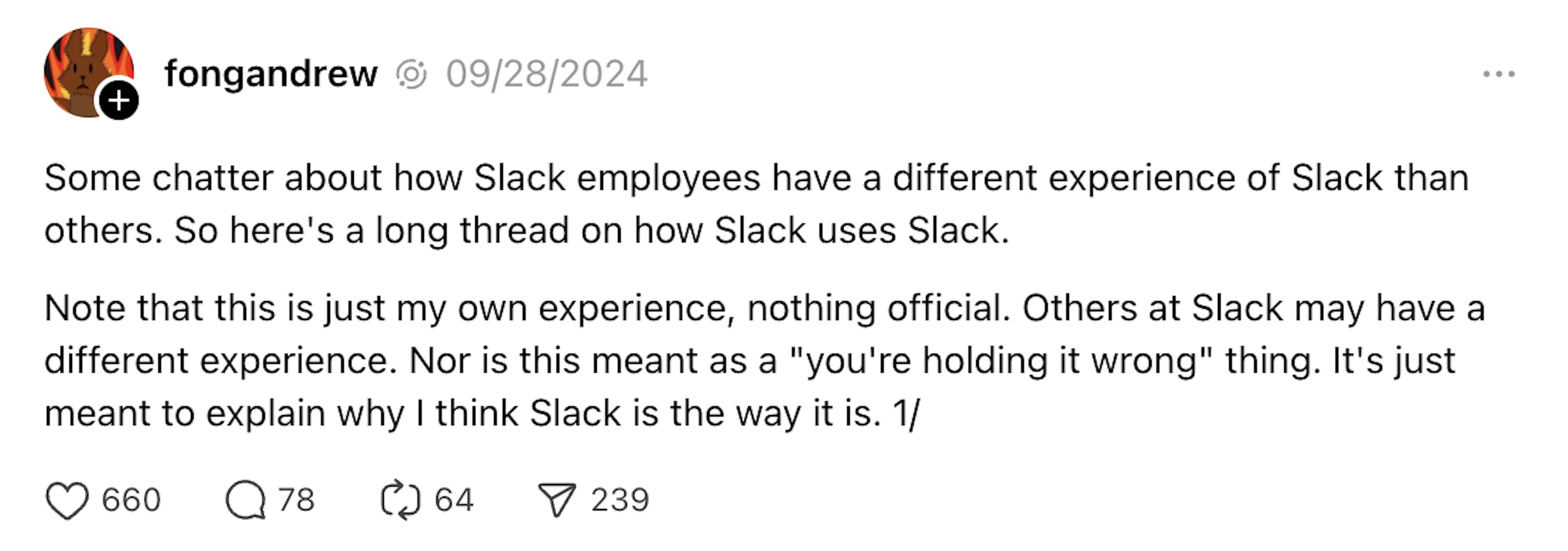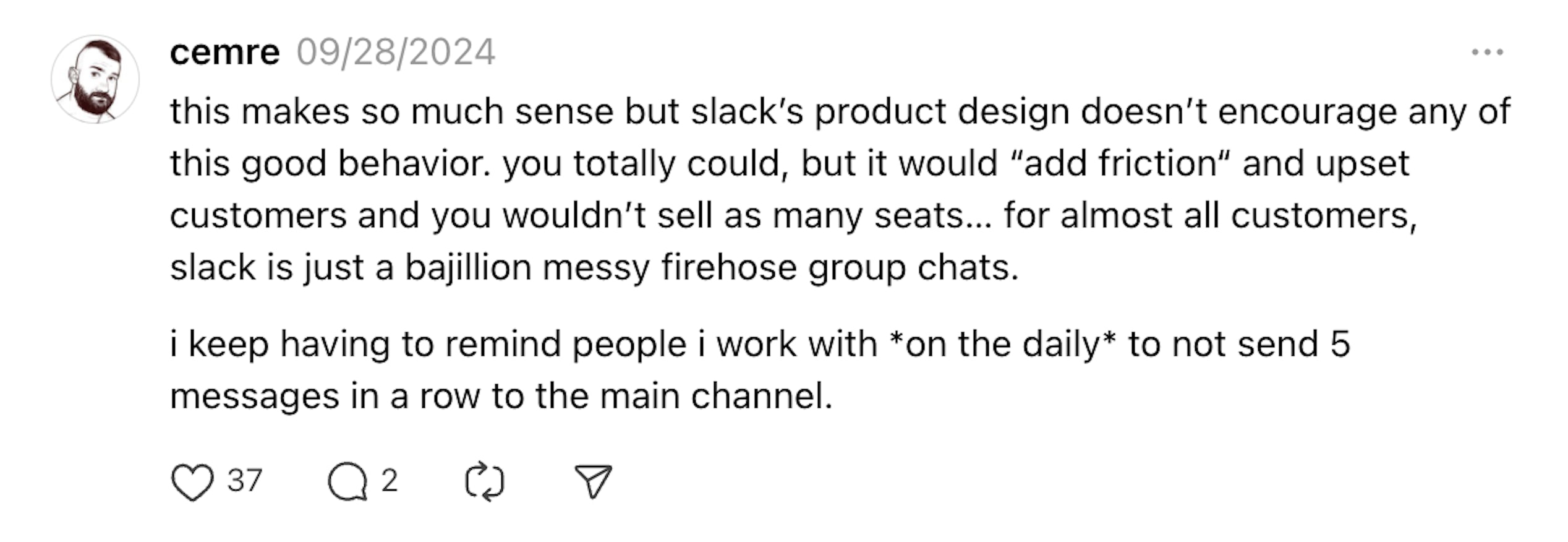After their latest episode on “The impossible dream of good workplace software,” I sent a messier version of this email to decoder@theverge.com. You can listen and read more about the episode on The Verge.
Hi Nilay & David,
I was howling because your episode on workplace software covered the reasons Brian Lovin and I co-founded campsite.com.
Small text box, small ideas.
I ran engineering teams at GitHub for a couple of years, and our Slack was a mess. There were over 2,500 employees on Slack, and we had three channels for long-form writing in other apps. But due to Slack’s design, these ideas were lost in daily chatter.
By the time I left GitHub, I spent more time bouncing between channels and chasing DMs than doing deep work.
I blame Slack’s product design, specifically the tiny text input that trains people to talk to coworkers like they’re DMing a group chat.
I read Stewart Butterfield’s We Don’t Sell Saddles Here and recently this thread from a Slack employee about how they use it internally.

Cemre’s response sums up my feelings:

This drives me crazy. If Slack should be used for more thoughtful, threaded communication, why wasn’t it designed that way?
Presence
A formative moment for me was during my last startup mid-COVID with a remote team. My colleagues were experienced and had their own deep-work projects.
Our Slack was so lonely!
Despite a watercooler channel for side conversations, everyone was mostly heads-down. I wondered, “What is everyone else doing?” I had to trust that everyone was focused, but the feeling of isolation didn’t go away.
Slack feels bad without constant chatter, but that chatter takes time away from deep work. There has to be a better way.
Patrick Collison tweeted about workplace distractions:

I couldn’t agree more. Slack is like a buzzing fly around your head; a constant noise of activity that pulls you in and forces context switching every few minutes.
Rebundling
David mentioned a trend of companies getting tired of managing 50 bespoke apps for their workforce, and I couldn’t agree more.
In Campsite’s early days, we used Slack, Zoom, Google Workspace, Notion, Linear, GitHub, and many other services for a 5-person startup. The tool-sprawl is worse at bigger companies.
Vendor lock-in is real. One of our biggest challenges at Campsite is the moat of Slack Connect. Or as one of my favorite PMF guides puts it, Slack is a “hard fact”:
You take a pain point universally accepted as a hard fact of life, and see that it’s merely a hard problem that your product solves for the customer. Your customers have resigned themselves to just living with the problem. They’re not urgently engaged with trying to solve it. The status quo is just how it is, and change doesn’t seem like an option.
It kills me every time we lose a customer saying “we hate Slack and Campsite app is amazing. We just can’t deal with the switching costs right now.”
—
This Decoder episode was great. I’m fired up to keep building, and want to eventually convince The Verge staff to switch to Campsite without mutiny.
We believe posts are the superior default for team communication. They’re the sweet spot between docs and chat: lightweight for quick discussions, but big enough to encourage complete thoughts and mindful comments.
If you want to work more deeply with your team without sacrificing presence and social connection, you should try Campsite.
-ryan
